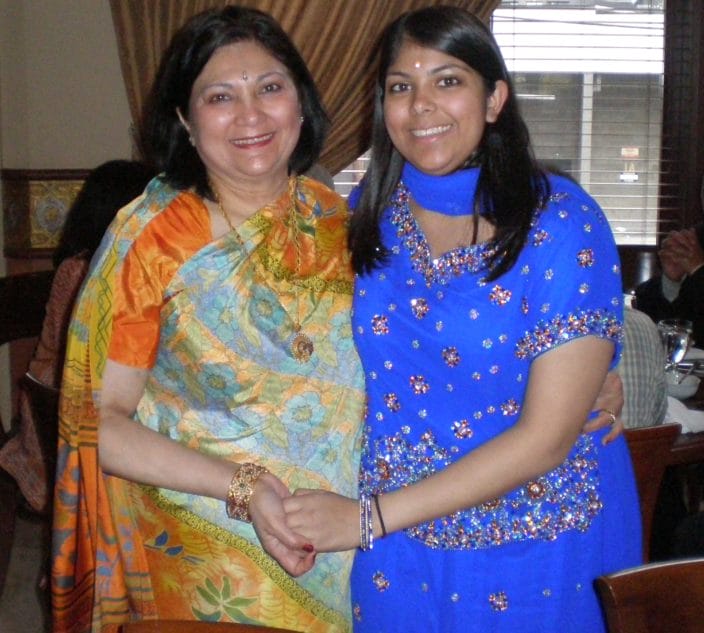Developing a food allergy in adulthood is a life-changer. Your carefree diet is out the window, and now you have auto-injectors, anaphylaxis risks, and lots of explaining. Meet those who’ve joined this brave new world.
ONE spring morning back in 2011, Sandy Williams was calmly sitting at her desk in her Washington, D.C. office, munching on one of her favorite snacks – mixed nuts. As she ate, a strange sensation came over her, which rapidly progressed into the symptoms of a frightening anaphylactic reaction.
“My eyelids started swelling and then my throat started closing,” she recalls. Williams was taken to the hospital, and was soon in such poor condition that she had to be rushed into surgery to have a breathing tube inserted. “From Monday through Thursday I was in a coma, with a breathing tube and all,” she says.
After recovering, Williams was tested by an allergist and diagnosed with allergies to both tree nuts and soy. She was shocked: she was 52 at the time and had never had any allergy, food or otherwise. But here she was, not just allergic but reacting at the extreme end of the spectrum.
The fact that tree nuts were a culprit was especially peculiar, since they had always been a favorite. “Ever since I could chew, three to four times a week I would eat nuts,” she says.
Williams was thrown into the deep end of the mysterious world of adult-onset food allergies. Somehow, well after childhood and past the maturing of the immune system, these grown people develop brand new food allergies, and not uncommonly to a food they’ve eaten regularly.
Tracking the Clues of a New Food Allergy
TAKE the case of Tanya Lacey, 40, who teaches high school in a town southwest of Toronto, Canada. Lacey became allergic to one of her preferred foods – shellfish – in her 30s. “People even thought I was a weird kid, I always wanted shrimp,” says Lacy, who was diagnosed in 2005. It took her some time to figure out why she was experiencing symptoms such as a feeling of throat tightness. Lacey was referred to an allergist, and she kept a food log in the month leading up to the appointment.
But she still had no real clue as to the culprit until she suffered an unnerving reaction at a restaurant.
“I probably should have gone to the hospital, but I didn’t because I wasn’t sure what was happening,” she recounts. “I had throat tightening, high anxiety, and felt really sick to my stomach.” Feeling like she needed air, she stepped outside into the cold February evening, and waited. “After an hour so, it kind of passed.”
Even if not ideally managed, the experience brought about an epiphany. Lacey recalled the strange sensation she’d had after eating shrimp at a party earlier that month. “It felt like I had swallowed one of the tails of the shrimp, and had it lodged in my throat,” she says. “And that’s what I had just had for dinner (at the restaurant) .” When the allergist appointment arrived, she wasn’t surprised when crustaceans were confirmed as her allergen.
Yet even then, it didn’t fully sink in. She joked with the doctor: “That’s my favorite thing to eat, can’t you just give me one of those ‘needle things’?”
The doctor’s reply was sobering. She was indeed giving Lacey an epinephrine auto-injector prescription – “because the next time you might die.” The patient went out to the parking lot and cried; “I had no idea that it could be so dangerous.”
While Lacey and Williams reacted to foods they had long enjoyed, this isn’t always the case for people who develop a food allergy in adulthood. For some, a longstanding aversion to a particular food may be a sign that an allergy is brewing.
“I was always a picky eater as a kid, I never really liked spicy foods,” says Johanna Bond, who was diagnosed with anaphylactic allergies to hot peppers (including chili, cayenne and paprika) and tree nuts at age 24. “I actually stopped eating walnuts while I was in college, because they would make my gums burn.”
Bond, a mental health counselor working in Rochester, New York, found out about her allergy while at a restaurant with friends. She had to visit the emergency room after eating a marinara sauce that contained chili flakes. Subsequent testing confirmed that her allergies were life-threatening.
Just like Lacey with the shrimp at the party, many who develop a food allergy in adulthood have had clues that something is not quite right. “I had experiences before, but had not really realized what they meant,” says Bond. “I never thought there was an allergy to nuts until I got the testing.”
Life Changes for Good
WITH a new adult food allergy – especially one revealed the hard way, through anaphylaxis – the initial jolt of diagnosis tends to give way to a variety of emotions, including fear, anxiety and concern about social isolation. Then begins the steep learning curve of safely navigating day-to-day life through reading grocery labels, asking about ingredients in all food situations, and always carrying your auto-injectors.
“Having to relearn how to eat is a huge undertaking as an adult,” says Bond.
Adults also tend to lack the social support that is often present for a child with a food allergy. “As an adult being thrown into this world, we don’t have parents or schools to help give us the tools to manage,” notes Kate Hufnagel, who lives in Colorado and was diagnosed with allergies to peanuts, tree nuts, lentils, sunflower, sesame and artichokes at the age of 38.
“You’re fine one day, and your life changes the next.”
Hufnagel had her first major reaction at work. It was triggered by a dish she had prepared herself, with familiar ingredients, including lentils. First her cheeks started to burn, then her face swelled and turned purple. By sheer good fortune, she happened to own an epinephrine auto-injector – it was prescribed after she happened to experienced a severe reaction to seasonal allergy shots. She injected herself and was taken to the hospital by ambulance.
“Within a couple weeks of my diagnosis I was carrying around (restaurant) allergy cards, and I wear a medical ID 24/7,” she says. Today Hufnagel blogs about allergic life and she has even spoken on adult allergies.
One thing adults need to learn quickly after diagnosis is how to speak up about their special diet needs. Unlike children, adults have to fend for themselves in potentially dangerous food situations such as dating at restaurants, or a party at somebody’s home. “You just have to ask, ask and ask. If you don’t feel comfortable, leave,” says Williams. “You have to be vigilant; you can’t assume people understand.”
And many people won’t understand. Sara Ray Roberts of Ohio, who was diagnosed with peanut allergy in her 40s, relates the story of a woman who brought some Rice Krispie bars to a class at her church. “Before I took one, I said, ‘Are there any peanuts in this?’” The woman said ‘no so Roberts began to eat.
“I took a bite, and could immediately taste the peanut. And she said, ‘Oh yeah, there’s peanut butter.” Roberts spit out the morsel and rinsed her mouth out. Thankfully, no severe reaction occurred.
She notes that many people simply don’t understand how dangerous food allergies are. “I’ve had some friends say, ‘Can’t you just take a chance and see what happens? or ‘Try it, just this one time.”
In some cases, even medical professionals express disbelief In Canada, Lacey recalls visiting a doctor for additional allergy testing after she had already been diagnosed with shellfish allergy. “He actually told me that ‘I don’t think you’re allergic to crustaceans, I think you have acid reflux from coffee and tomatoes.” He realized he was mistaken after the skin test.
The Research Picture
BY FAR, most research on food allergy has focused on food-allergic children. Given the alarming rise in the prevalence in kids in the past decade – the disease now affects about 8 percent of North American children or about 1 in 13 kids – this is understandable. While kids are vulnerable and issues such as school accommodations are an obvious concern, what’s less discussed is that the rate of food allergy has also climbed rapidly among grown-ups.
Experts at New York’s Icahn School of Medicine at Mount Sinai estimate that 5 percent of adult Americans* have a diagnosed food allergy. One large study from 2004 found about 2 percent of the U.S. population was affected by shellfish or fish allergy, with 60 percent of the shellfish allergies reportedly developing in adulthood. [Editor’s Note: See statistics update at end of article.]
Few studies have considered the phenomenon of people who develop a food allergy in adulthood. But then in 2014, Northwestern University scientists published research showing that about 15 percent of the food-allergic adults studied had developed their condition as adults. In this study, based on allergy clinic medical records, the most common allergen was again shellfish, but what was surprising was that all of the Top 9 allergens were represented – and not in small numbers. After shellfish, the most common adult allergens were tree nuts, fish, soy and peanut. Even milk and egg allergies, typically associated with childhood, are popping up in adults.
Aside from the prevalence, the bigger question of how adults can become anaphylactic to foods they’ve tolerated their whole lives remains unanswered.
“I think that’s where a lot of the research needs to focus: What is the trigger?” says Dr. Ruchi Gupta, a pediatrician who has conducted allergy prevalence studies, and who worked on the Northwestern study. “Is it something in the environment, is it an infection, a virus they may have gotten, a change of where they live?”
While the Northwestern study analyzed potentially severe allergies only, many adults begin experiencing mild reactions to certain fruits and vegetables because they have pollen allergies that have become stronger over time. “The most common reason that people become allergic to a food outside of the first few years of life is because the food that they become allergic to is related to something else they’re allergic to,” says Dr. Robert Wood, chief of pediatric allergy and immunology at Johns Hopkins University.
This cross-reactivity is known as Oral Allergy Syndrome, where certain fruits and vegetables cause mouth itching and other oral symptoms (and very rarely, anaphylaxis) because the immune system “sees” the proteins of the foods as similar to the allergenic pollen proteins. There’s also an interesting relationship among shellfish, dust mites and cockroach allergies.
“The majority of people who have shellfish allergy are dust-mite allergic,” says Wood. “Both cockroach and dust mite share some proteins with shellfish.” But it’s hard to tell the initial culprit. “If you take a 40-year-old who reacted to shellfish, and you test them to shellfish and dust mite, they will be positive, because the proteins are similar enough. But you can’t prove which came first, whether it was the dust-mite allergy that truly led to the shellfish allergy.”
Though the research emphasis on children with food allergy may be understandable, it makes some allergic adults feel a little neglected. “It’s like we’re told, ‘Well, you have an allergy, but because you’re an adult you’ll always have it, we’re sorry,” laments Williams. Even with diagnosis, Lacey felt the allergist’s approach was terse at best.
“It was like ‘OK, you’re allergic to shellfish, don’t eat it, you could die, here’s an EpiPen, go home? And there was nothing after that.”
Living Well After Developing a Food Allergy in Adulthood
DESPITE past bad reactions and numerous social challenges, not one of the those interviewed with adult-onset allergies finds the condition is unmanageable. Rather, they are proud of how they do manage, but it does take effort. Roberts developed a strategy to help those close to her cook without peanuts. She used to buy 10 pounds of peanut-free shelled pecans every year from Georgia pecan growers.
“I would take some with me when I went to a situation where they were going to have peanuts, and I’d give them pecans,” she says.
Roberts’ late husband loved peanuts, so they worked out a deal where he could only eat them when out-of-town –but there were conditions. “He would eat them in the nude in the hotel, and he would have to take a very good shower after, and brush his teeth before he came home,” she says.
For Bond, writing is a way to cope with developing a food allergy in adulthood. She started a blog and is now working to get a book published to help others in the same situation. “The book I’ve been writing is the book that I would have liked to read.” she says.
To others in the same boat, Hufnagel offers the wise advice of taking things one day at a time. “Focus on finding one substitute at a time, because if you focus on everything all at once, that can get overwhelming,” she says. It’s also important to find substitutes that are appealing. “Just because we have food allergies doesn’t mean we should sacrifice taste,” she say.
And lastly, even though it may feel like it at times, Hufnagel stresses that adults with food allergy shouldn’t feel alone – there are other adults out there int he exact same situation. There are also a large number of support groups, online forums and Facebook groups that can be great help with coping and learning to manage the allergy. “Don’t be discouraged, there is a huge community out there.”
*Statistics Update: A January 2019 population study now pegs the rate of adult food allergies much higher, at approximately 10.8%.
First published in Allergic Living magazine; read about the new e-magazine here.









